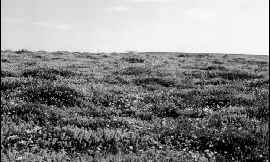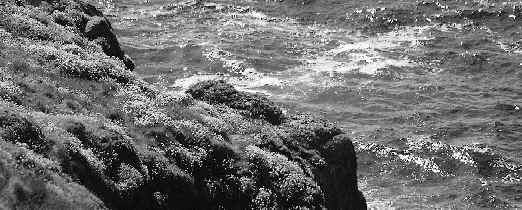

The loss and decline of wildlife and habitat in Cornwall has been well documented, particularly in recent decades (Box 1). However, despite this, the county still retains an extremely rich environment (Box 2). Here we set out some key elements in the programme of work which the Trust will be undertaking as we go into the next millennium to ensure that we look after our very special natural heritage for future generations.
Environmental Records Centre for Cornwall and the Isles of Scilly (ERCCIS)
From its beginning, the Trust recognised that sound information on Cornwall's biodiversity was essential. With this we can monitor the resource, identify key issues and campaign or advise to ensure its conservation.
Further development of the records centre is therefore one of our key tasks, ensuring that it provides a comprehensive service to all users and providers of data, including the Trust itself.
We will be seeking, in particular, to fill in the gaps in our knowledge. Projects to clarify the distribution and status of many of Cornwall's mammals, work to develop a systematic and comprehensive picture of the county's extensive intertidal habitat, and the development of systems for monitoring the many actions being taken to conserve Cornwall's biodiversity are three areas of particular concern which are currently high on the agenda.
Facilitating access to data and supporting biological recording and recorders, so vital to our work, are also major elements in the work programme.
Of course, none of this will be possible without support and we will continue our work as part of the National Biodiversity Network programme to secure further service level agreements with agencies and organisations who we anticipate will increasingly turn to us for assistance with data management and associated functions.
Nature reserves
Nature reserves remain one of the best ways to secure the future of key habitats and species, and we will continue to take forward our active programme of acquisition. We will regularly review our approach, ensuring we use our resources to best effect in safeguarding the most threatened and vulnerable of the county's habitats and species.
Our programme of habitat enhancement, access improvement and interpretation will also continue, ensuring that our reserves continue to play a major role in the promotion of wildlife conservation in Cornwall.
Conservation and education programmes
As we enter the next millennium it is likely that both pressures on the natural environment and opportunities to protect it will increase, the Objective 1 programme being just one example of how this may happen.
Resources available for the development of conservation and education programmes will always be limited so we must continue to ensure they are used wisely. In particular we need to ensure they are complementary to the actions increasingly being taken by other organisations and agencies. Our continued involvement in the Cornwall Biodiversity Initiative, which has brought so many organisations together, will help ensure this.
Perhaps most importantly, we will be aiming to increase substantially the community's involvement in our work, whether this be at the individual landowner or larger village or parish group level. To succeed in our objectives we need to engage everyone in the conservation of our natural environment.
Trevor Edwards and Paul McCartney